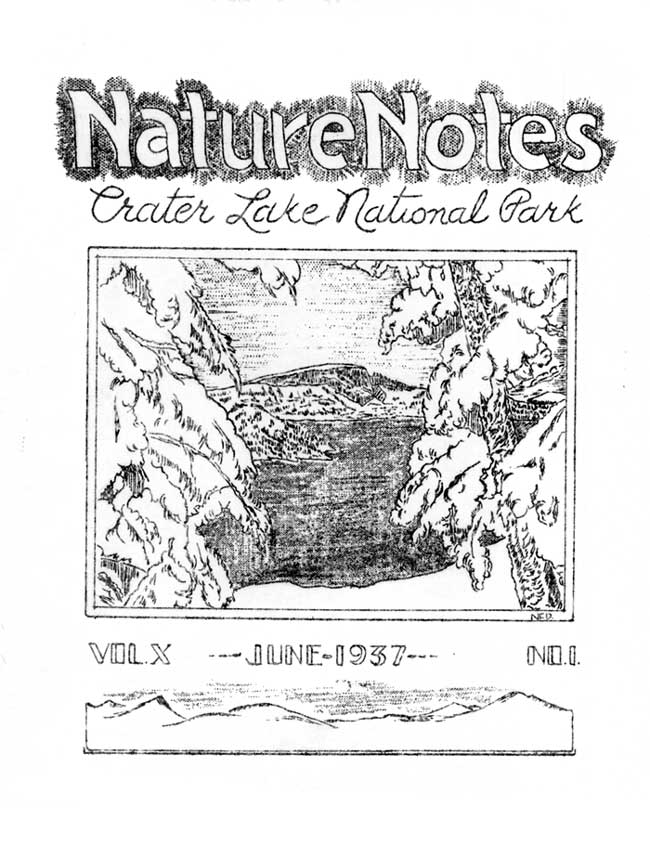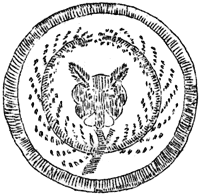
Volume 10 No. 1 – June 1, 1937All material courtesy of the National Park Service.These publications can also be found at http://npshistory.com/Nature Notes is produced by the National Park Service. © 1937 |
| Nature Notes from Crater Lake National Park are issued during the summer months. These pamphlets contain articles describing the natural features of the Park, Oregon Caves National Monument and Lava Beds National Monument, the two monuments being administered by the staff of Crater Lake National Park. Copies of Nature Notes may be obtained from the Park Superintendent, Crater Lake, Oregon. The reprinting of the articles appearing in Nature Notes is encouraged. Please give credit to the pamphlet and author. | ||
| David H. Canfield Superintendent |
John E. Doerr, Jr., Editor Park Naturalist |
|
|
|
||
Cover Design – Nancy Elliott Doerr
Preface
By John E. Doerr, Jr., Editor
Crater Lake National Park
The park includes an area of 250 square miles on the crest of the Cascade Range in southern Oregon. The area was established as a national park in 1902, preserving the unsurpassed scenic beauty of Crater Lake, a deep lake, the clear fresh water of which reflects and refracts unusual hues of blue. Color is only one of the elements of the inspiring beauty of Crater Lake. Its setting is unique. The lake, having an area of 20 square miles, is cupped within the crater of an extinct volcano. Cliffs 500 to 2000 feet high completely surround the lake. The crater walls are partially mantled with hemlock, fir, and pine trees. On the gentle outer slopes of the mountain which one ascends in approaching Crater Lake there are deep canyons, magnificent forests and open meadows supporting a colorful display of mountain wild flowers. Hiking and fishing are popular outdoor sports during the summer months. Skiing is popular in the winter, and the park being accessible throughout the winter months by the west entrance road from Medford and the south entrance road from Klamath Falls.
Oregon Caves National Monument
This national monument, an area of 480 acres, is located in the Siskiyou Mountains in southwestern Oregon. The caves, named “The Marble Halls of Oregon” by Joaquin Miller, are truly marble halls. Underground water penetrating to great depth along fractures in the marble formation has dissolved out an extensive system of chambers. Water dripping from the ceiling and walls has decorated the halls and passageways with fantastic stalactites and stalagmites which stimulate one’s imagination as well as one’s appreciation of the beauties of nature in caverns never touched by sunlight. In the magnificent forest around the cave entrance there are trails along which one gets inspiring views of forest-covered mountains and valleys. Along the trails one can observe many species of trees, mammals, and birds.
Lava Beds National Monument
Located in northeastern California, the monument includes an area of 45,000 acres. As the name suggests, volcanic formations, some of quite recent origin, are of greatest importance. There are hundreds of lava tubes which were once the passageways for streams of molten lava. Volcanic cones rise above the general level of the adjacent country. There are excellent examples of “aa” and “pahoehoe” lava flows. Within the monument there are interesting historical features including battlefields of the Modoc War of 1872-73. There are important ethnological and archaeological features. Petroglyphs on cliffs and pictographs in caves are evidence that the region was inhabited by primitive people long before the coming of the white man.



